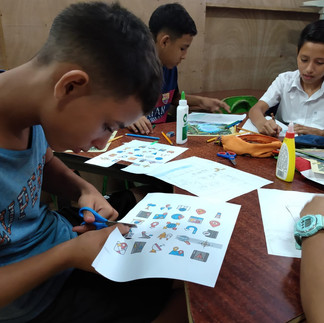In 2015, the United Nations General Assembly adopted the 2030 Agenda, a global action plan that aims to promote sustainable economic growth, social inclusion, and environmental protection in the context of peace and cooperation.
This agenda gave rise to the 17 Sustainable Development Goals (SDGs), which cover various areas crucial to achieving sustainable development and involve governments, organizations, businesses, and civil society.
In this global context, Pacuare Reserve is actively contributing to the achievement of these SDGs. Claudio Quesada, Pacuare Reserve's Research and Conservation Coordinator, highlights The Reserve's early vocation to address key issues that are now reflected in the SDGs.
"Long before the goals were designed, the Reserve was already working to achieve many of these goals, such as engaging with communities, pursuing poverty eradication, marine ecosystem conservation, and climate action. In this case, what we did was adapt and try to find out how we could do even more to achieve these goals that seek sustainable development," explains Quesada.
Pacuare Reserve's contribution to achieving the SDGs manifests in several areas:
No Poverty (SDG 1)
The Reserve promotes local economic growth by hiring most of its staff from nearby communities and practicing fair trade with local businesses.
"We are searching for people in the surrounding communities to provide them the option of having a fair job, a decent job, where they feel good about doing their work for economic benefits, and not as what’s happened in the past, where some people had to resort to illegally collecting turtle eggs to sell or for consumption. By supporting poverty eradication and providing people with the option of economic benefits, we are trying to change the perception of the use of natural resources," says Quesada.
Sustainable Communities (SDG 11) and Life on Land (SDG 15)
Pacuare Reserve operates on a 100% sustainable energy model, obtaining all its electricity from solar panels - a green, renewable energy source. It also protects 6 kilometers of beach and 688.6 hectares of forest, contributing to the conservation of terrestrial life and providing a sustainable environment for wildlife and local communities.
A reforestation program has been carried out in The Reserve, planting approximately 5,000 trees of species native to the area, including the mountain almond tree, which is used at different points in the life cycle of the green macaw.
Climate Action (SDG 13)
The Reserve not only records weather data but is also dedicated to understanding and mitigating the impacts of climate change on its ecosystems. This includes protecting species such as sea turtles from high temperatures by installing artificial shade in the hatchery to mitigate the effect that high temperatures have on embryo mortality. The effects of microplastics on turtle nests are also being investigated on The Reserve.
Life Below Water (SDG 14)
Pacuare Reserve is actively working to protect marine species, especially sea turtles, by monitoring and conserving their nesting habitats. Thanks to these efforts, the illegal harvesting of sea turtle nests has been drastically reduced, translating into a tangible achievement in the preservation of marine life.
Partnerships for the Goals (SDG 17)
The Reserve has established strategic alliances with a variety of stakeholders, including local communities, educational institutions, government entities, donors, civil society organizations, and research institutions.
These collaborations strengthen the work of The Reserve and accelerate the fulfillment of the SDGs, underscoring the importance of cooperation in achieving the Sustainable Development Goals.
Environmental education
On the other hand, in the environmental education processes carried out in the reserve, the SDGs are addressed as a transversal axis. For example, between September and October 2023, workshops were held with children from two schools in communities near the reserve: Luzon and Santa Marta de Bataan. During the sessions, which took place both in the schools and in the reserve, practical examples of how sustainable practices can be developed in the communities based on the SDGs were discussed.
Pacuare Reserve exemplifies how an organization can play a crucial role in promoting sustainability and achieving the Sustainable Development Goals. Its holistic approach and commitment to protecting the environment and improving social well-being highlight the importance of addressing these challenges collaboratively and operating in line with global sustainability goals.






























Comentarios